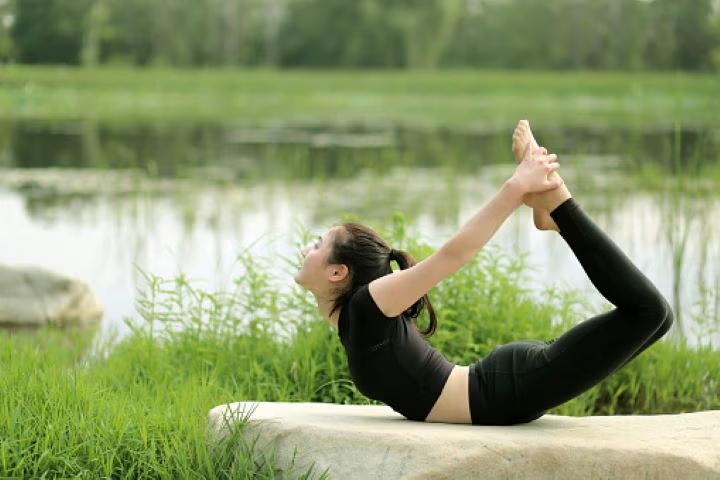The International Day of Yoga, celebrated on June 21 every year, has grown into a global movement, drawing attention to the physical, mental, and spiritual benefits of yoga. While modern yoga often emphasizes dynamic flows and fast-paced sequences, there’s a quiet revolution happening in yoga studios and living rooms across the world—a return to ancient, traditional poses that once formed the bedrock of this age-old practice. These timeless asanas, once overlooked in favor of more visually dramatic postures, are making a big comeback as practitioners rediscover their power to restore balance, enhance mindfulness, and promote holistic well-being.
Here are five ancient yoga poses that are quietly regaining popularity and why they matter more than ever:
1. Viparita Karani (Legs-Up-The-Wall Pose)
Though often seen as a restorative posture, Viparita Karani dates back to ancient Hatha Yoga texts and was traditionally considered a powerful inversion for energy renewal and lymphatic flow. With rising stress levels and long working hours, this gentle pose has made a quiet return in both home practice and therapy-based yoga classes.
Benefits:
- Relieves tired legs and swollen feet
- Improves circulation and calms the nervous system
- Supports hormonal balance and digestion
Why it’s back: In an age of burnout and screen fatigue, this relaxing inversion offers a grounding, non-strenuous way to wind down and reset.
2. Malasana (Garland Pose)
This deep yogic squat is one of the most natural positions for the human body and has been practiced for centuries in India and other Eastern cultures. While modern lifestyles have moved us away from squatting, Malasana is being reintroduced as a key pose for hip mobility and digestive health.
Benefits:
- Opens hips and groin
- Strengthens ankles and lower back
- Stimulates digestive organs and improves elimination
Why it’s back: With rising awareness about pelvic health and lower back pain, Malasana is becoming a staple again for those seeking deep-rooted stability and flexibility.
3. Tadasana (Mountain Pose)
Often underestimated due to its simplicity, Tadasana is the foundation of all standing poses. This pose, described in early yoga texts like the Gheranda Samhita, helps develop awareness of alignment, posture, and breath. It’s now being embraced not just as a warm-up, but as a mindfulness practice in itself.
Benefits:
- Improves posture and body awareness
- Enhances focus and balance
- Activates the core and legs
Why it’s back: In the digital age, poor posture is a growing problem. Tadasana offers a back-to-basics approach to reconnect with body alignment and breath control.
4. Baddha Konasana (Bound Angle Pose)
Known in classical yoga as Bhadrasana, this seated posture is revered for its effects on the reproductive and digestive systems. Once taught to royal families in India as a meditative pose, it’s regaining favor in pre- and post-natal yoga, as well as in practices targeting inner calm.
Benefits:
- Opens hips and thighs
- Improves circulation in the pelvic region
- Aids in relaxation and stress relief
Why it’s back: As yoga moves beyond fitness and into therapeutic realms, Baddha Konasana is being celebrated again for its subtle but powerful inner work.
5. Ardha Matsyendrasana (Half Lord of the Fishes Pose)
Twisting poses have ancient origins, and Ardha Matsyendrasana is named after the sage Matsyendra, one of the founders of Hatha Yoga. This spinal twist works deeply on the internal organs and is known for its detoxifying properties.
Benefits:
- Increases spinal flexibility
- Stimulates liver and kidneys
- Improves digestion and detoxification
Why it’s back: As interest grows in gut health and internal cleansing, traditional twists like this one are reappearing in both classical and modern sequences.
Conclusion
While the yoga world often celebrates innovation and modern styles, there’s a growing recognition of the wisdom embedded in ancient practices. These five yoga poses, grounded in centuries of tradition, remind us that simplicity and depth often go hand in hand. As we observe the International Day of Yoga, it’s the perfect time to reflect not just on yoga’s future—but also on the treasures of its past. By returning to these ancient postures, practitioners are not only honoring the roots of yoga but also embracing timeless tools for health, peace, and transformation.
Do Follow Us On Instagram







